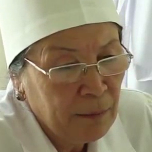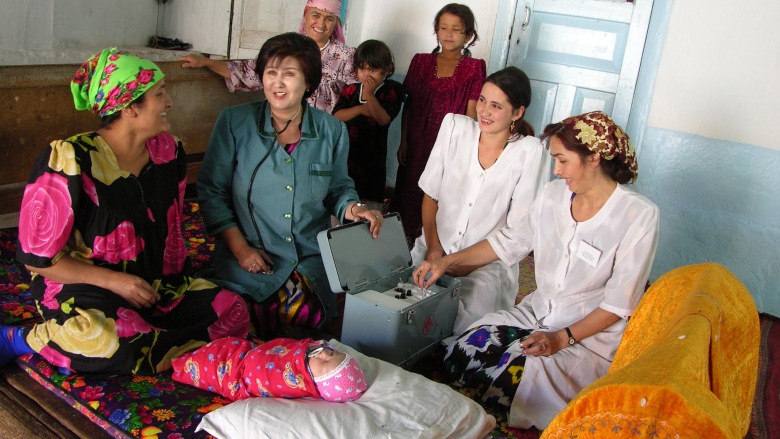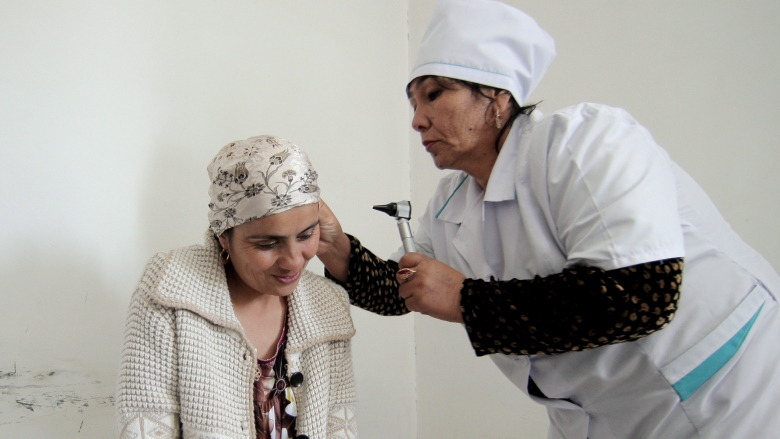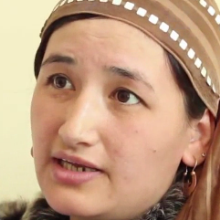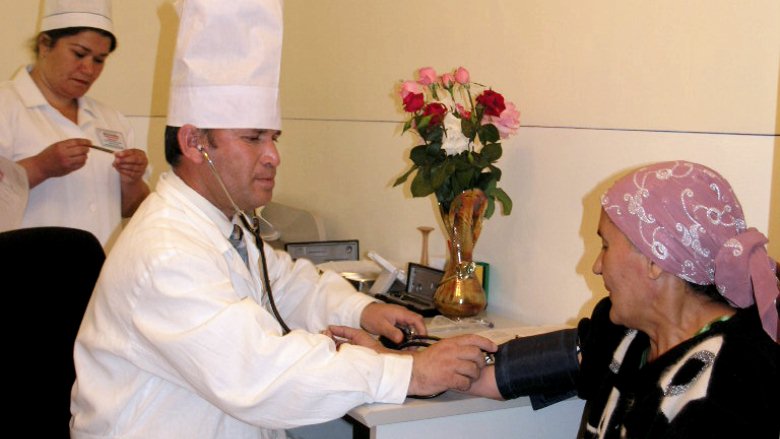The numbers are grim, especially on maternal and child health. Women and children in Tajikistan face higher rates of malnutrition than women and children in other Central Asian countries and the South Caucasus. And babies are threatened, as well; acute infection is the leading cause of death for newborns and preventable illnesses play a part in a considerable proportion of all child deaths.
Basic preventative care is often hard to come by. For example, over 50 percent of the country's 5 year olds are iodine deficient. And about 21 percent have stunted growth.
The obstacles to health care are many. Distance is a particular problem. People who live in mountainous areas or poor regions without decent roads find simply getting to a health care clinic can be a struggle. As a result, many mothers-to-be don’t go in for pre-natal check-ups or to learn about family planning.
